Design Workshop: Natural Wood Siding Minus the Maintenance
http://decor-ideas.org 05/06/2014 03:23 Decor Ideas
Architects, designers and homeowners go to great lengths to keep the weather out of buildings, a worthy and necessary goal. But the task of creating home exteriors that resist weather’s effects — including washing, sanding, stripping and refinishing — is significant, time consuming and expensive.
Rejecting this unending cycle of maintenance and accepting weathering as part of a home’s design aesthetic makes good environmental, economic and design sense. The homes below embrace weathering as part of their aesthetic — and even celebrate it.
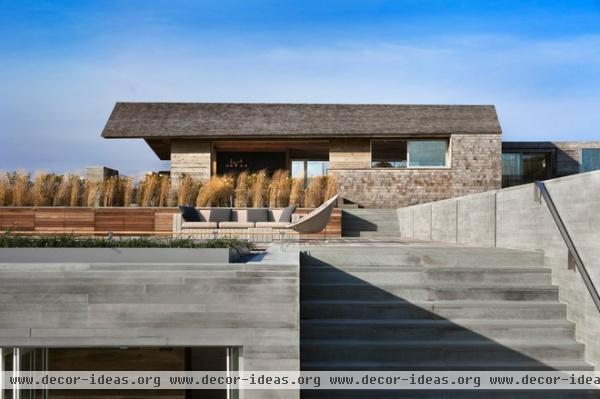
Wearing In
Much like a leather chair that gets worn in rather than worn out, this home uses unfinished wood as a weather barrier. Sited near the sea on the tip of Long Island, New York, it is clad in a combination of western red cedar and white oak shiplap boarding. Appearing to rise above a stone foundation — a ruin, of sorts — the more delicate, natural wood structure fits nicely within the color range of the material palette of soft French grays.
The marine environment accelerates the weathering of the siding from the raw browns of the new wood to a silvery gray. Left unfinished, the building’s shell will continue to fade and dull, but will remain durable and intact, as the architect has selected two species known for their resistance to decay.
Other elements, such as the bluestone and concrete, will acquire a natural patina over time as well. I find this an interesting dialogue, the struggle for permanence in an impermanent and changing environment at the boundary between land and sea.
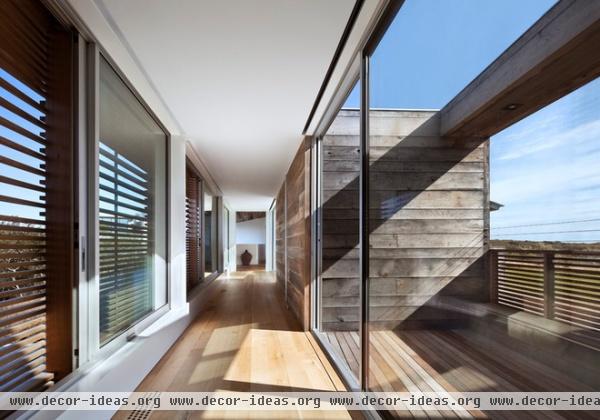
Visually linking interior and exterior materials is a poignant way to call attention to the impermanence. The bleached exterior is already showing signs of exposure to the elements, while the interior wall is a rich, warm brown unmarred by water staining and solar exposure.
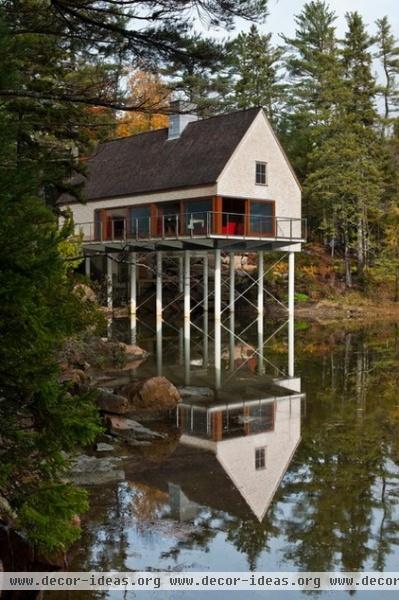
Creating Contrast Between Inside and Out
The exterior of this home, which I was the project architect and lead designer for during my time with Elliot + Elliot Architecture, draws its muted color palette from the surrounding fog-shrouded coast of Maine. Eastern white cedar wall shingles and western red cedar roof shingles and trim are left to weather naturally in time to a neutral gray.
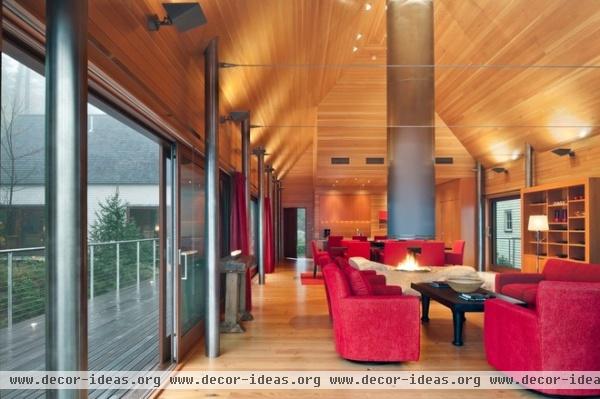
The interior contrasts the exterior grays, giving way to a warm palette of Douglas fir. This contrast highlights the rough, weathered exterior and lends a sheltering aspect to this collection of structures situated at the edge of a harsh coastal environment.
Often the goal of my clients is to maintain the look of their newly installed wood, both inside and out. This solution offers a practical alternative that accepts weathering as part of the life of a building on the exterior while reserving the look of new wood for the interior.
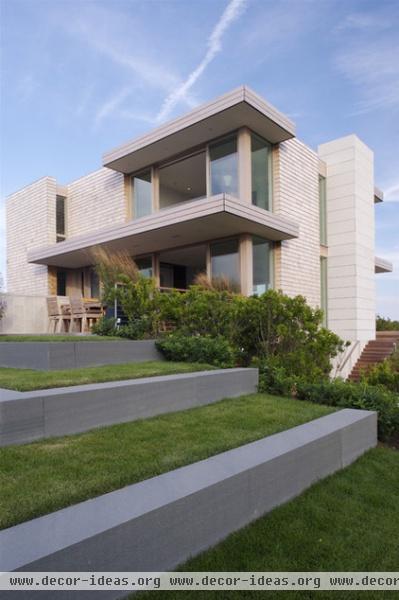
The architect here has emphasized the different shapes and volumes of the home by cladding the exterior in a skin of Alaskan yellow cedar shingles. Left to weather naturally to a sun-washed gray, the composition is more about shadow and void than of material contrasts.
Weathered shingles lend a humbleness to just about any structure. Their horizontal coursing is close to the size of a human hand, and their finely textured shadows lend depth and interest to planar wall surfaces.
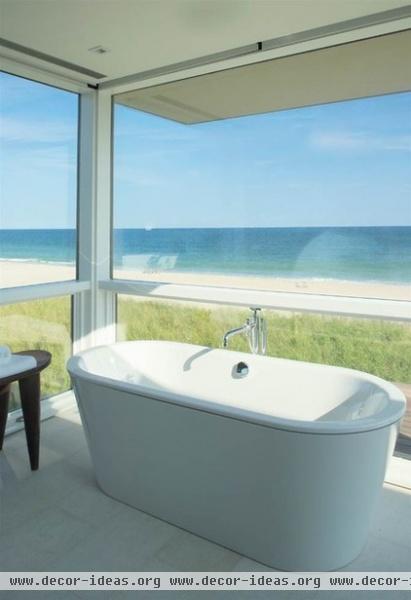
This project’s interior shares more with its exterior than the previous examples. The architect has carried the monochromatic theme inside while deferring to the panorama outside: the grass, the sea and the shifting dunes beyond, which provide the color.
This view reminds me why natural siding in harsh environments just makes sense. The salt air, punishing storms, wind and sea spray make for a maintenance nightmare for fussy finishes on siding. By selecting materials that naturally resist these forces, we can appreciate the beauty of the environment instead of plowing through a list of household chores.
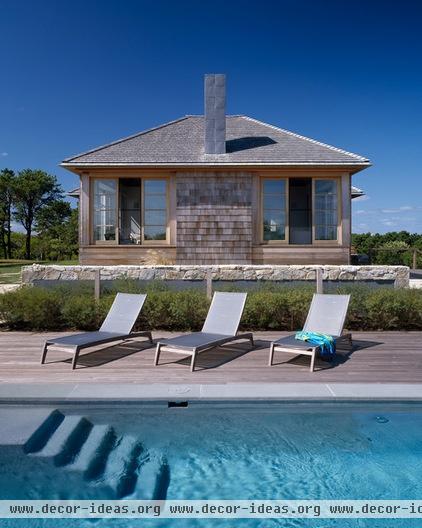
Understated Exteriors
A common theme among the projects that use a natural wood palette is their understated exterior character. This project uses a natural wood palette of teak and red cedar. But understated doesn’t have to be boring.
The architect here has varied the use of horizontal wood siding and shingles to emphasize different architectural features: the corners and bases of the linked structures. Introducing layers of detail in a monochromatic color palette achieves subtle shadowing effects that change with the time of day and season. There’s a depth of interest in this composition that begs careful study.
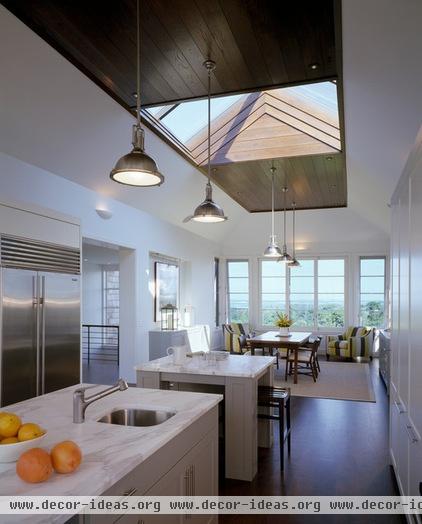
As in the other projects, the distinction between inside and out is striking. The dark walnut stain on the oak floor and ceiling was inspired by West Indies architecture. This is a formal break with the restrained exterior, and it’s interesting to see the architecture doing so much in such a modest space.
This is proof that an understated exterior can be a foil for a spectacular interior, which can be useful for aligning divergent interior and exterior architectural goals or restrictive neighborhood covenants.
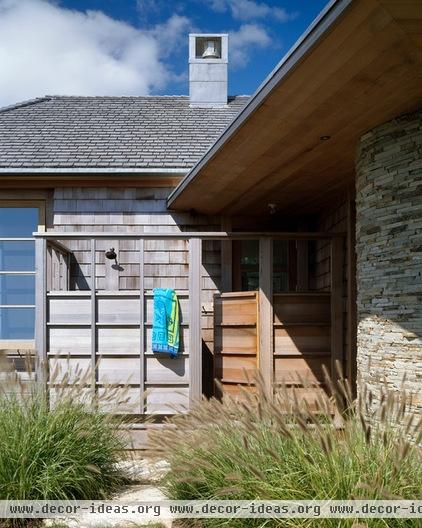
Weathering and Exposure
A variegated facade is one of the hallmarks of unfinished siding. For those hoping for a tailored, tidy and clean exterior, the weathering process can seem messy. Careful material selection is key to finding the right balance between an unkempt aesthetic and a wabi-sabi (imperfect and transient) one, but there are other alternatives, as we’ll see.
Weathering is most pronounced on horizontal exposures (such as the roof) and least pronounced on soffits (the underside of the overhang), due to exposure to the sun, rain, wind and snow. In this project they’ll eventually all recede to gray, but the sheltered surfaces will take much longer.
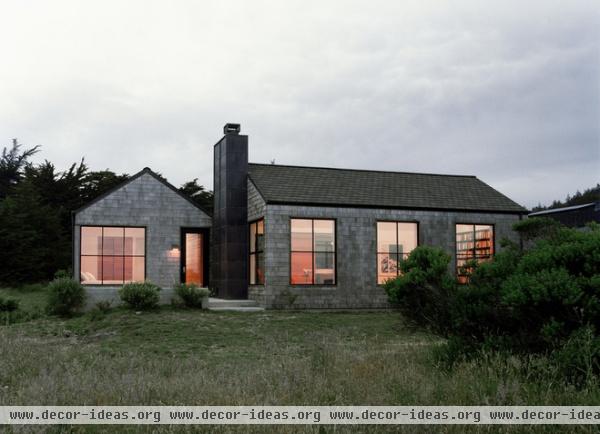
Selecting Materials for Weathering
The untreated western red cedar on this exterior is paired with a natural copper chimney. Both of these materials will age differently over time. The copper will stay bright for a week at most, then transition to a light purple and quickly to dark bronze, and eventually to a bright green verdigris; the red cedar will darken with age.
When selecting materials for their natural weathering characteristics, seeking low-maintenance ones makes perfect sense. Copper, and metals in general, as well as stone and concrete are complementary material choices for a weathering material palette.
Be sure to pay attention to the final coloration of the substrate of your unfinished siding. While many of the woods seen in this ideabook favor a silvery gray, red cedar on a wall can weather to a dark brown. Of course, this depends on exposure and physical environment. Look at buildings nearby and you’ll quickly get a sense for how materials weather in your climate. Certain physical environments, such as saltwater ones, will bring out different tones in different materials.
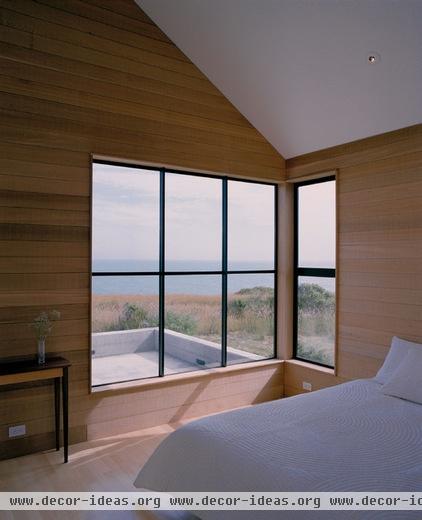
Moving inside, the architect used a more tailored version of the exterior red cedar. I appreciate the carefully selected contrasts at work here — rough and smooth, weathered and untouched. The casual yet considered interior is the perfect frame for the changing sky and ocean in the background.
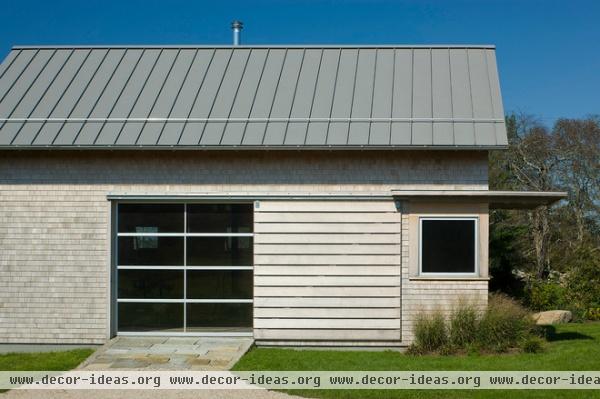
Types of Wood
If you’re serious about pursuing a low-maintenance, untreated, natural wood exterior, a good resource is the list published by the USDA Forest Products Lab. It classifies native U.S. woods into categories depending on their natural resistance to decay. I’ve supplemented the list with a few tropical hardwoods, as they’re often even more well suited to resisting decay, given their natural growth environment.
Pressure-treated wood, by way of comparison, relies on a pressurized bath of chemicals to prevent decay over time. Natural woods are typically a more environmentally friendly alternative. Cedar, white oak, black cherry, black walnut and Spanish cedar are all highly resistant woods, while black locust, ipe, jarrah and old-growth teak are exceptionally resistant.
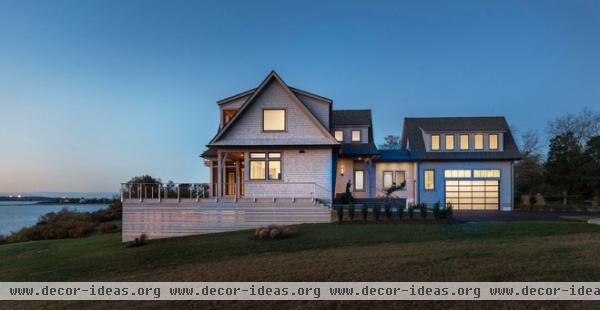
Sourcing
Some wood species can be difficult to source, or there are environmental impacts from their being harvested and brought to market that can outweigh the benefit of low maintenance.
Even though it’s highly rot resistant, black locust isn’t widely grown for commercial lumber harvesting, and the milling of it dulls saw blades quickly. And many of the highly desired decay-resistant woods are tropical hardwoods whose forests face environmentally devastating harvesting practices.
Seek out wood certified by the Forest Stewardship Council (FSC). The FSC is an international organization that maintains a list of sources of wood from forests that are managed sustainably, and it monitors the entire process from seed to market to be sure every party complies with sustainable best practices. These woods cost more, but using them protects the resource for future generations.
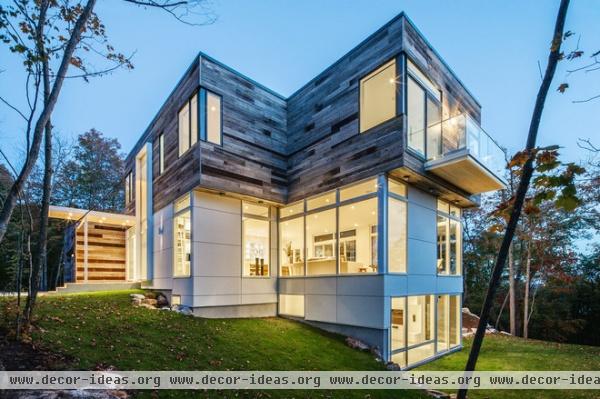
Reclaimed and salvaged timber are also responsible choices, and you’ll often find old-growth highly resistant species in excellent condition and preweathered after many years in service.
Understand that many of these options will be more expensive than their less rot-resistant counterparts. But the higher up-front material costs will be offset by the lower life-cycle costs saved in maintenance and upkeep.
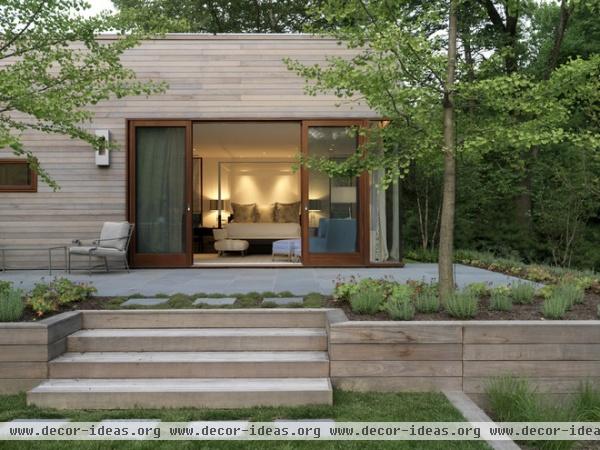
An Alternative
If you just can’t bear the thought of putting up new siding only to watch the uneven process of weathering happen over time, there are other options. You can use a naturally weathering substrate, such as the cedar seen here, but artificially control the way it weathers.
Bleaching oil is a good option for this approach. It’s a translucent stain with a small amount of gray pigment with bleach in it. The bleach whitens the color of the wood substrate, and the gray pigment colors it to the soft gray you see in weathered siding. By applying it to all surfaces before it’s installed, you’re essentially hastening the weathering process and simultaneously evening out its effects. Walls appear more uniform in color and exhibit less water staining.
More: Design Workshop: Additions With Attitude
Related Articles Recommended












